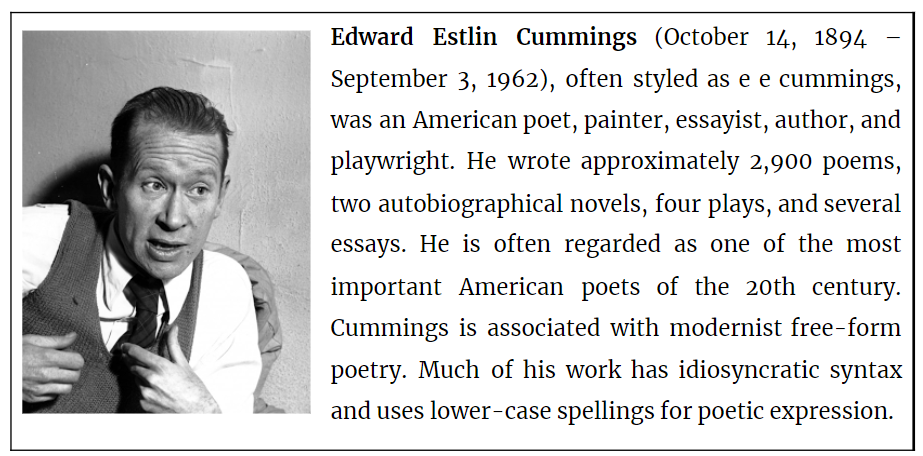Who are You Little I Summary, Theme & Analysis
Who is the writer of the poem 'Who are You Little I'?
Summary of Who Are You, Little I by E.E. Cummings NEB English -11
The poem 'Who are you, little i' composed by E.E. Cummings depicts a child at the end of the day looking out a window. It's about nature and how it affects the speaker. The speaker of the poem is the person who "voices" the words, recalling a childhood memory that is closely related to nature. Cummings could be the speaker. The poet addresses himself in the form of his own inner child in the poem "who are you, little I by e. e. cummings. His childlike wonder has surfaced as a result of the inspiration of a brilliant sunrise.
This poem is about nature and how it affects the speaker. The poem is quite short, with only eight lines. The main theme of this poem is the beauty of nature and its positive impact on humans. The speaker of this poem begins by standing near a window and looking out of it at the end of the day. He enters a nostalgic state, recalling his childhood when he used to sit and contemplate a sunset. He recalls how he used to enjoy such beauty when he was a young boy of about five or six years old. It's a wonder he still has a youthful aura about him. This presence is capable of appreciating the beauty of the evening. Perhaps he wants to come out of his shell, but his maturity and adulthood prevent him from doing so.
The poet has described a little boy, his surroundings, and his acts of peering (looking) and feeling about beautiful and wonderful nature in a beautiful and wonderful way. He has shared his childhood memories of being close to nature. He has presented himself as a little I or a boy of five or six years old who keeps peering through some high window at the beautiful golden sunset of November and pondering the wonderful transformation of the day into night in a very beautiful way.
Theme
In terms of the central idea of the poem ‘Who Are You Little I’, presents the close connection between nature and childhood. A child is very close to nature but as he grows up this connection is disturbed. A child is capable of perceiving beauty and astonishment in the world of nature. In terms of the context, the speaker remembers his childhood days when he as a child looked at the setting sun in November through the window. In terms of rhyme scheme, we have abided in other words the first line rhymes with third-line second rhymes with the fourth line, and so on.
Short Analysis of the Poem
While analysing the poem ‘Who Are You Little I’ it is found that the poem explains the beauty of nature and its positive impact on humans. It begins with the poet’s question; Who are you little I?. He is not in fact asking a question but remembering his childhood days. We also notice parenthesis in the second and sixth lines which is another characteristic of Cummings’ poetry. The first five lines resemble the poet’s childish days. He remembers his childish days when he was five or six and sitting nearby the window and looking at the sunset. Here the poet has used of small letter ‘i’ for two purposes, first of all, he has used small ‘i’ for self-reflection or referring to himself as a child, and secondly, it shows the image of the poet indicated by the second line.
He also used the semicolon between wind and at in the fourth line to suggest two different locations as inside and outside the window such as boy is inside the window and sun is setting outside it. Finally, the poem concludes with the statement that if the day has to become night this is a beautiful way and it also reflects the child’s excitement at the transformation of the day into night.
Therefore, for him, this is something beautiful. It can also be interpreted as the poet’s desire to see the end of his life where the days refer to life and night refer to death.
